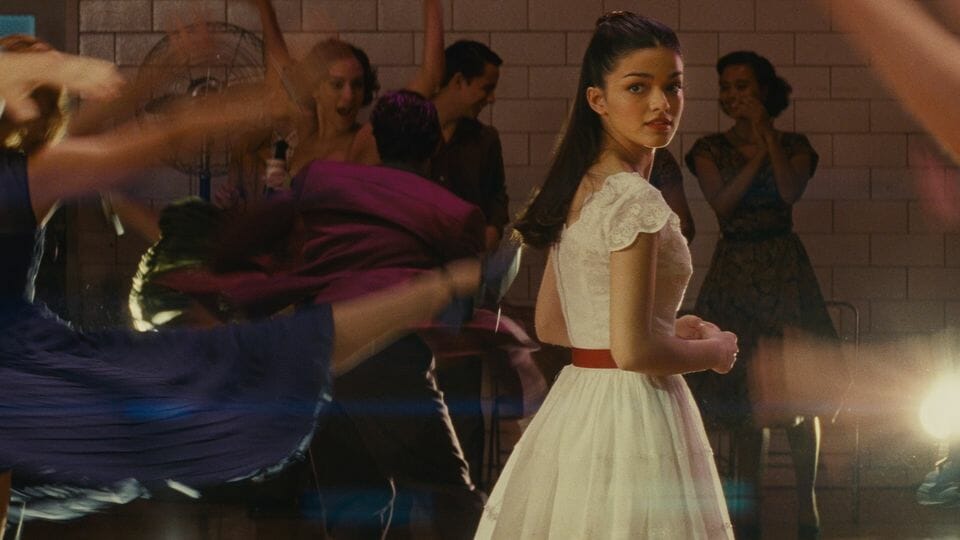West Side Story is Steven Spielberg’s first passion project in nearly a decade, but it’s been gestating in his mind for much longer. Ever since the 90s, he’s been telling anyone who’ll listen—journalists, assistants, probably Tom Hanks—that he’s dying to direct a musical. What a difference passion makes. Hot off the heels of Ready Player One (one of Spielberg’s worst, by my estimation), West Side Story is a full rejuvenation. And not just for Spielberg—in case you haven’t heard, this musical’s been done before.
If you’re coming to the remake as a fan of the musical, it’s highly unlikely you’ll be let down. Spielberg does a tremendous job of walking the line between faithful adaptation and modern reimagining. It’s a seamless marriage of old and new. But like any marriage, you’ll have to take it for better and for worse.
READ ALSO: Review: ‘Tick, Tick… Boom!’ is a mixed bag on screen
There’s no need to draw up a prenup (which in this metaphor would be, uh… the promise of a ticket voucher if you walk out of the theater?). It’s clear from the first shot that the good outweighs the bad. For a variety of technical and tonal reasons, the color palettes of popular films have descended into drab homogeneity lately. West Side Story’s use of color is like the first drop of water after days of wandering in the desert. From minute one, the movie is top to bottom gorgeous. Sumptuous color grading, brilliant lighting, scrupulous production design—dreams don’t look this good.
The film’s cinematography stands head over shoulders above the recent slate of movie musicals. DP Janusz Kamiński has shot every single Spielberg feature since 1993—that’s 18 collaborations—and his work here is some of the best he’s ever done. It’s remarkably considered. There are several lovely crane shots that push gently towards the action, reverent for the performers and choreography. Compositionally, West Side Story leaves its contemporaries ashamed in the corner. Many of the shots, as zealous as they are inventive, still linger in my mind. If I had one complaint with the movie’s visual style, it’s with the editing: contrary to most Hollywood fare, West Side Story could use more cuts. On a rhythmic level, the pacing of the shots can feel like it’s lagging behind the music. It’s all the more noticeable for how well-tuned the other elements are.
The same goes for Ansel Elgort, who turns in a miserable, flat performance as Tony. Dear lord, does Elgort threaten to sink the movie. His co-star, then-teenage newcomer Rachel Zegler, acts circles around him, as does neo-Riff Mike Faist, whose performance is straight out of Old Hollywood. At no point did I buy that Elgort’s face was the face of a man falling in love. His performance is so discordant with the rest of the movie that it feels like he was added digitally in post—there’s no way he was actually there. And he shouldn’t have been, given the accusations against him, but that’s for you to google.
The boring lead performance only exacerbates the musical’s storytelling flaws. West Side Story can feel a little emotionally vacant. The late, great Steven Sondheim, who wrote the lyrics for West Side Story, once lamented that his work for the show was too “self-consciously poetic”, and I can’t help but agree with him. Its vague sentimentality tends to obscure the depth of feeling that the characters experience. Additionally, the story structure of Romeo and Juliet is sometimes a loose fit for West Side Story. Its analogue for Romeo’s murder of Juliet’s cousin, for example, rushes Maria to emotional conclusions that had more room to develop (and more expressive dialogue) in Shakespeare’s tragedy. Spielberg’s adaptation, scripted by Angels in America scribe Tony Kushner, doesn’t mend these problems.
It stiches up others, though. There’s no brownface, for one—a notable improvement over the 1961 film. This version is more culturally sensitive on the whole, and in ways that enhance the original text. It even refuses to subtitle the Spanish, which is an extremely refreshing step for a film industry that purports to be multicultural. The character Anybodys is now explicitly trans, and it’s debatable whether the film handles this change respectfully, but there’s no denying that its heart is in the right place.
It’s also undeniable that Spielberg put his whole soul into this. It’s not a perfect musical or a flawless adaptation, but it’s made with unimpeachable craft and palpable adoration. The night you see it, the world will go away.
★★★½ (3.5/5)




